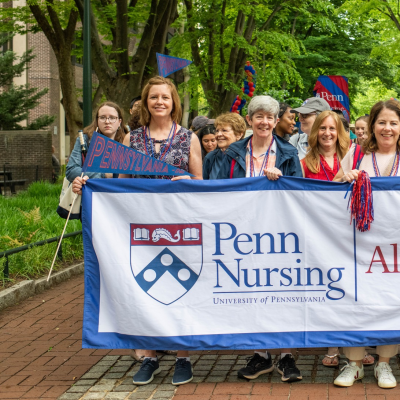Looking Back and Moving Forward
Mid October marked the worst of the Influenza Pandemic in Philadelphia. Suddenly, new cases dropped and the city started to recover.
The third week of October saw the worst of the influenza pandemic in Philadelphia with over 4,000 reported dead. Then suddenly, the number of new cases and deaths dropped dramatically over the course of a week, and continued to drop in the following weeks. Cases were low enough that the ban on public gatherings was lifted on October 26 th . The Visiting Nurse Society of Philadelphia reported nearly normal numbers of calls and cases by mid-November. While there was a spike in influenza cases in late December thru early spring, the third wave of the virus was less impactful and deadly than the fall of 1918.
In Philadelphia, the reported death total for influenza alone was over 12,000, eclipsing its annual death rate. Philadelphia had one of the highest death rates in the country, four times higher than Boston. Despite the numerous deaths though, many more survived and recovered from the illness.
The daily death toll from influenza alone in Philadelphia would exceed the city’s average weekly death toll from all causes. In a single day, 759 people died from the pandemic alone. In an average week, 485 died from all causes. Within ten days the city went from two deaths and hundreds ill to hundreds dead each day and hundreds of thousands ill. Every hospital bed in 31 hospitals were filled. 13 emergency hospitals, averaging 500 beds each, filled within the day they opened. People who were healthy a couple days ago were fighting for their lives, some dying within a day of contracting influenza. For over three weeks, influenza paralyzed the city. Schools were closed. Public meetings banned. Yet the population continued to get sick. Despite declarations on October 4 th and 5 th , the peak of pandemic didn’t happen until the week of the 19 th when 4,597 died from influenza or pneumonia.
As influenza spread, so too did fear. People isolated themselves, not speaking to anyone, avoiding crowds, not having anywhere to go but stay at home, where there may be people sick or dead. The rapid rate of death, and the fact there were so many dying, meant the city and it’s undertakers and morgue couldn’t keep up with dead bodies. Philadelphians could literally walk down the street seeing and smelling dozens and dozens of bodies. Most cities, even those hit hard and deadly, did not have the additional burden of bodies with no one and nowhere to go.
As the pandemic subsided, the people recovered and the city resumed its normal functions. In the upcoming weeks we will highlight the annual reports of local hospitals for how they recorded the outbreak, or more importantly, how little they recorded. We will also look at the minutes and meetings of visiting nurse organizations, as well as newspaper clippings to see how much or how little the pandemic influenced their mission.
Related Links
Content created by Jessica Clark, with assistance from Elisa Stroh and Patricia D’Antonio, PhD, RN, FAAN.








